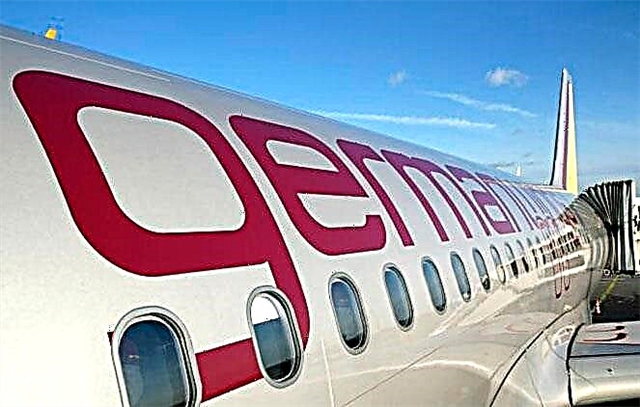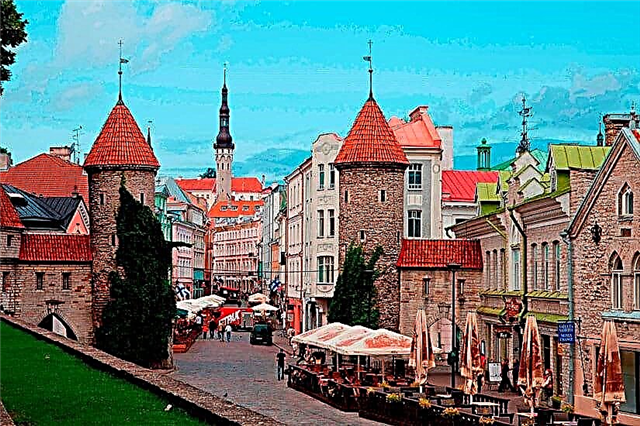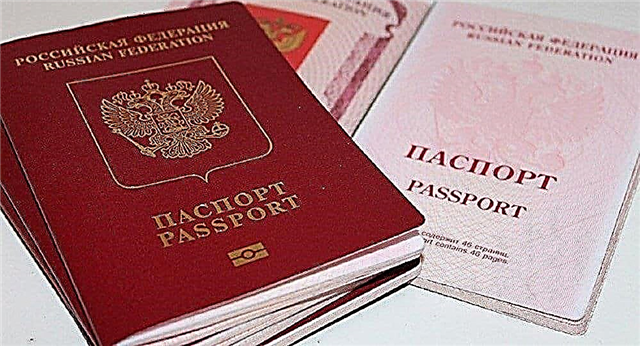The transport system in Germany, which is recognized as one of the best in Europe, is associated with reliability, high quality and precision. Even in small cities in Germany, buses run regularly, and in larger cities, both surface and underground transport systems are developed. Public transport in Germany has become an integral part of the life of every citizen of the country.

Brief information about public transport in Germany
All types of public transport are equally developed in Germany: buses, city trains, metro, trams and trolleybuses. There is a single transport ticket presented in different cities. Its cost, as in other European countries, depends on the number of trips and transfers.
It is more profitable for travelers to use a pass for several days or a week.
It is noteworthy that Berlin does not have the highest price for a single ticket, and the most expensive is public transport in Munich.
Metro in Germany
On February 15, 1902, the Berliner Lokal-Anzeiger newspaper published a note about the opening of the surface and underground metro. At 11.00 the first train departed from the Potsdamer Platz station. It was then that the development of the underground in Germany began.
Metro lines run in 17 cities in Germany. There is no city railway in Dresden, the spa town of Baden-Baden, Magdeburg, Leipzig and other settlements.
Every major German city has its own underground - U-Bahn or Untergrundbahn. Metro lines mainly run through the central districts. The high-speed off-street transport system of the subway is combined with city trains in large cities. Metro and electric trains are the main part of the city's transport infrastructure.

The subway entrance at each station is marked with a capital “U”.
The metro operates from 4.00 to 01.00. The interval between train movements is 5-8 minutes. The fare in each city is different, but everywhere there is an effective system of discounts. The fine for travel without a ticket reaches 40 euros.
Rail and city trains in Germany
In most large cities in Germany, for example, in Berlin, Cologne, Hanover, Hamburg, the names and purpose of the systems of light urban and suburban trains are similar. Light city trains are called S-Bahn, and commuter trains are called Stadtbahn.
The S-Bahn operates on a rail basis, traveling to the suburbs and nearby cities as an overhead metro. The Stadtbahn works like a tram, but is a faster system, fully serving the city center and the surrounding areas.
Some sections of the movement of city trains run underground, their main difference from suburban regional trains is the shorter length of routes.
Stadtbahn trains have the advantage of traveling on tram lines, which reduces travel time. The route name for the Stadtbahn system begins with an uppercase “U”, and for the S-Bahn system it begins with “S”.

Train timetables showing the platform and transfers can be printed from the ticket machine. For example, the Berlin commuter train scheme includes 15 lines and 165 stations. The total length of the routes is 331 km.
City buses
Bus communication in terms of prevalence and popularity is not inferior to either the metro or city trains. Bus stops in Germany are marked with a green capital letter “H” or Haltestelle. At the bus stops there are special displays that display the time of arrival of the bus.
Bus intervals decrease during rush hour and increase in early morning and late evening.
The bus service starts at 6.00 and ends at 24.00. In many cities, for example, in Frankfurt am Main, there are night buses. In the largest cities, a bus route has been laid along the historical center with stops near interesting sights.
Tram is a convenient form of public transport
Tram lines run in all major cities. The most extensive tramway network is located in the eastern part of Germany and Bavaria. In Germany, this type of transport is usually called in the English manner - Tram.
Distances between tram stops are short, but the route can be long and go into the suburbs.
Outside the city, trams are very fast. A tram ticket gives you the opportunity to travel to cities in the neighboring tariff zone.
In Germany, the appearance of a tram is not much different from a train, because the cars are connected in a rather long train. This is especially true for those cities where there is no metro.

In Germany, cleanliness and comfort are monitored. Trams are equipped with soft seats and a board with the names of the stops. Each stop is announced in the carriage.
The photo shows a tram at a stop in the center of Kassel. It can be seen that there are several more trams behind. The timetable is made in such a way that trams from different points arrive at the stop at the same time so that passengers can change trains. Trams stay at such stops for up to three minutes.
The stops are equipped with a board showing the arrival time and the waiting time for the next tram.
In Germany, one of the stages of a transport project is coming to an end - the construction of an underground tram in Karlsruhe. An experiment took place here: a tram passed through an underground tunnel. The movement began earlier than it was planned. After the successful launch of the route, work continues to enable electric vehicles to travel in this manner on a permanent basis.
When traveling in any city in Germany, a useful application for tourists DB Navigator, available here, will help. The program automatically detects your location, all you have to do is enter the name of the destination, and the system will give you the best route.
What other types of public transport are there in Germany?
Traveling to different cities in Germany, a tourist can meet different types of transport:
- Zahnradbahn is a cogwheel railroad track that is used in the highlands of the country (in Stuttgart - “Zacke”).
- Cogwheels.
- Seilbahn - cable cars or funiculars.
- Schwebebahn is a suspended railway. The oldest cable car is located in Dresden.
- The H-Bahn / Hochbahn is a monorail overhead train.
- Monorail.
- R-Bahn - regional commuter trains.
The trolleybus still exists as a form of public transport, but it has practically outlived its usefulness. Today there are few cities with a trolleybus service.

There are river and air connections in Germany. The Rhine, the main river in the country, is the main artery for river transport. You can reach major cities such as Düsseldorf, Bremen or Hamburg by ferry, boat or boat.
River and seaports are located in Berlin, Bonn, Bremen, Cologne, Dresden, Lübeck, Rostock, Travemund and other cities.
The largest port is based in Hamburg. In addition to the Rhine, the Elbe and Danube rivers are navigable. Water taxis run along the Spree River, which runs through the center of Berlin. The opening of the shipping season is in March - April, and the end - in October - November. For this method of travel, you will have to pay about 76 euros.
Air transport Germans use infrequently, because they are characterized by frugality. Residents of Germany prefer express trains to planes.
If you regularly monitor offers from low-cost airlines, you can buy a ticket for 25 euros or less. To do this, you need to go to the official website of the air carrier. Low-cost companies include Germanwings, AirBerlin, Ryanair.
The largest international airports in Germany are Fulstüttel (Hamburg), Hanover-Langenhagen (Hanover), Kloche (Dresden), Düsseldorf, Konrad Adenauer (Cologne), Franz-Josef Strauss (Munich), Otto Lilienthal (Tegel), Frankfurt and Stuttgart ... There are 107 airports in the country.
Types of tickets and cost
Germany has a one-ticket-one-zone system. A one-way trip for a short distance will cost up to 4 euros.
Travel tickets can be purchased:
- at the office or website of a transport operator (for example, BVG);
- at ticket machines at a bus stop or directly in transport;
- from a bus or tram driver;
- at the metro ticket offices.
The fare in Berlin and other cities in Germany depends on the type of ticket.
| Ticket type | Conditions |
|---|---|
| One-time | Within one zone within two hours for all types of transport. |
| Group | From 3 to 10 passengers can use it once within 60 minutes. The group ticket is also available for the whole day. |
| Day | The ticket is for one zone until 04.00 the next day. |
| Weekly | Ticket for a calendar week until 04.00 the next day of the new week. |
| Monthly | Ticket for a calendar month until 12.00 on the next day of the new month. |
| Annual | For one adult or three children. Recommended for long stays in a German city. |
An international pass (Eurail Pass, InterRail) or national (WelcomeCard - from 18.5 euros) will save the passenger money.
Features of taxi travel in Germany
A characteristic feature of taxi services in Germany is the drivers who are polite, punctual and respect the rules of the road. German taxi drivers will not overtake, cut or exceed speed. Passengers feel safe in the car, they feel clean and tidy.
Taxi services take to the fleet such brands as Mercedes, Audi, BMW and Volkswagen.
There are three ways to order a taxi.
| Taxi call method | Notes (edit) |
|---|---|
| Call the taxi service | Tell the dispatcher your location and the car will arrive in a few minutes. Popular services are Go Taxi 479-803, Taxi Deutschland 22-456 and Taxi Berlin 479-811. |
| Catch in the street | If there are no passengers in the car, the taxi driver will stop. The exception is not his licensed zone. Each driver has a license, according to which he can work in a specific city or district. |
| Walk up to the parking lot | Parking lots are located mainly near major attractions in the city. |
There are no uniform taxi fares in Germany. The range of prices in different cities is quite noticeable.
On the lands of Brandenburg, a taxi ride will cost 0.90 euros per km, and in Nuremberg, Berchtesgaden, Garmisch-Partenkirchen and other states of Bavaria - 3 euros per km. The average cost reaches 1.50 euros.
Conclusion
The transport system in Germany was influenced by the high rates of economic development. All types of public transport are represented in the country - city trains, buses, metro, trams, trolleybuses. Trolleybuses are becoming less common, and non-standard modes of transport are gaining popularity: cable cars, funiculars, and cogwheels. Taxi fares are quite high, which is why Germans rarely use this method of transportation.











